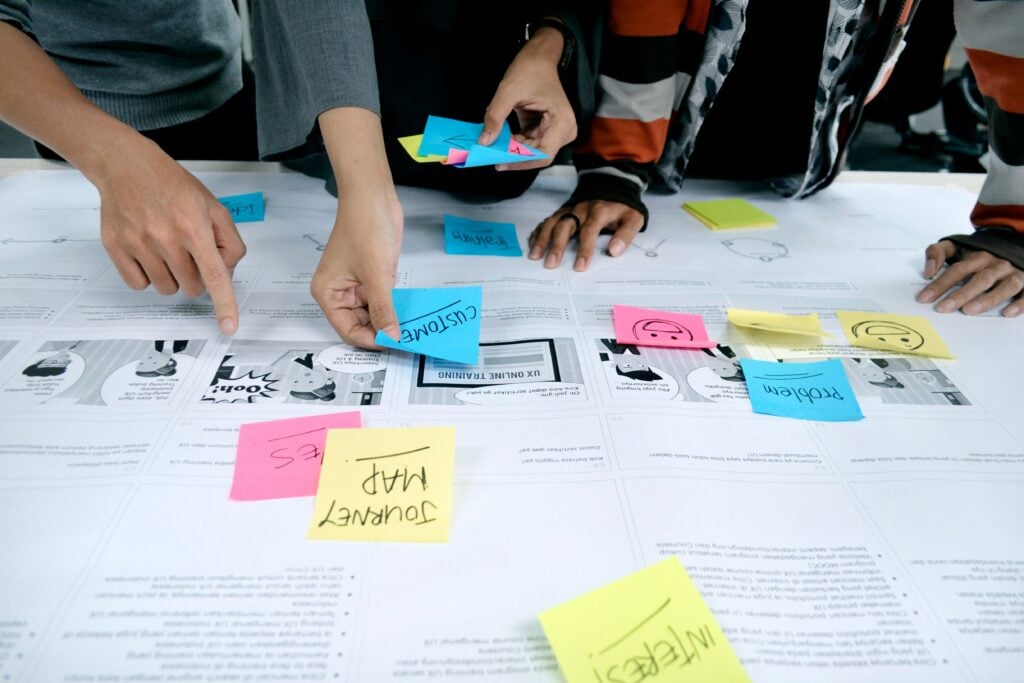More Features, More Problems
In product development, it is easy to believe that adding more features equals adding more value. Each new capability feels like a milestone, a demonstration of innovation and customer focus. Yet behind the scenes, every addition introduces new layers of complexity, potential bugs, and hidden costs. Before long, what began as a streamlined solution evolves into an over-engineered, cluttered platform that is cumbersome for both users and development teams.
At Sonin, we encounter this pattern often. Ambitious businesses want to stay competitive, so they react quickly to market shifts or user feedback. But without a clear strategy, they risk chasing short-term wins at the expense of long-term usability and maintainability. The irony is that more features rarely translate to more satisfaction. Instead, they tend to dilute core functionality, slow delivery, and fracture user journeys.
Feature bloat does not just make products slower; it erodes user trust, drains resources, and limits scalability.
When Products Become Bloated, Complex, and Unlovable
Every feature carries an invisible cost. Beyond the hours spent designing and developing it, there is ongoing work in quality assurance, user documentation, maintenance, and onboarding. When those features accumulate without strategic alignment, the product loses its clarity of purpose and begins to feel disjointed.
Here is what that looks like in practice:
- Slower delivery: More components mean heavier testing cycles, complex dependencies, and delayed releases.
- Weaker UX: Users face cluttered menus, confusing options, and competing pathways that obscure the core experience.
- Low adoption: Too many features overwhelm users, creating decision fatigue rather than engagement.
- Rising maintenance costs: Technical debt expands exponentially as each layer of functionality adds risk and resource strain.
“A bloated product is not a stronger one; it is a distracted one.”
When this happens, teams often double down, believing one more update will fix things.

How Feature Creep Happens
Feature creep does not stem from bad intentions; it stems from misalignment. It thrives in the “just one more thing” mindset that prioritises motion over progress. Without a disciplined product strategy, the distinction between improvement and clutter becomes blurred.
Common causes include:
- Stakeholder pressure – Each team demands its “must-have” functionality, and product leaders struggle to say no.
- Fear of missing out – Businesses mimic competitors’ features without validating whether they meet genuine user needs.
- Lack of success metrics – Without a guiding North Star, every idea feels equally valuable.
- Poor validation loops – Features launch prematurely, lacking data or user insight to confirm their impact.
What makes feature creep so dangerous is its stealth. Studies show that nearly 45% of software features are rarely or never used, yet they continue to consume development and maintenance resources. It does not explode; it seeps quietly into your product until the original purpose is buried beneath well-intentioned complexity.
Frameworks for Ruthless Prioritisation
Guarding against feature bloat requires a culture of intentionality. Product leaders must establish guardrails that empower teams to make informed trade-offs. Here are three frameworks Sonin uses with clients to maintain focus and drive impact:
1. Value vs. Effort Matrix
Map each potential feature on a matrix comparing business value to implementation effort. This visual exercise reveals where to invest energy and where to exercise restraint. High-effort, low-value items should trigger immediate re-evaluation or removal.
2. Jobs-to-Be-Done (JTBD)
Shift conversations from “what should we build?” to “what is our user using this product to do?” By reframing discussions around the real outcomes users seek, teams avoid adding features that do not contribute to that mission.
3. Feature Tax Evaluation
Treat every feature like a subscription. Each requires maintenance, updates, and user support. If a feature stops providing measurable return, whether financial, experiential, or strategic, it is time to sunset or refactor it.
These approaches foster accountability and help teams make evidence-based decisions. The most innovative products are not defined by the number of things they can do, but by how well they do the right things.

Sonin’s Perspective: Lean Roadmaps That Drive Value
At Sonin, we guide businesses toward clarity by emphasising outcomes over output. Our approach begins with Discovery Workshops that uncover real business objectives, map user journeys, and identify where technology can deliver measurable efficiency. This ensures we are building the right thing, not just the next thing.
The outcome is transformative: products that grow strategically, adapt efficiently, and remain a pleasure to use.
A lean roadmap is not about doing less; it is about focusing your resources where they create the most value.
Practical Takeaways
- Audit regularly: Review your roadmap quarterly to confirm every feature still aligns with key objectives.
- Quantify impact: Use metrics such as adoption rate, task completion, and retention to evaluate success.
- Use validation frameworks: Apply JTBD or Value vs. Effort scoring before any new build commitment.
- Build lean: Prioritise the smallest viable feature set that meets user needs, then iterate based on real data.
- Measure and evolve: Use analytics, heatmaps, and qualitative feedback to ensure features continue delivering ROI.
- Champion subtraction: Sometimes the best optimisation is removing what no longer serves the user.
Final Thought
Every feature must justify both its existence and its upkeep. In product strategy, the goal is not to cram in endless functionality but to design an ecosystem where each component contributes measurable value. The hallmark of a mature digital product is not abundance; it is intentionality. Teams that embrace this mindset balance innovation with restraint, aligning user needs, technical feasibility, and business strategy into a cohesive vision.
When that balance is maintained, the result is more than a functioning product. It is a scalable, adaptable, and resilient platform that evolves alongside the organisation it serves. Sustainable growth comes not from adding complexity but from mastering clarity.